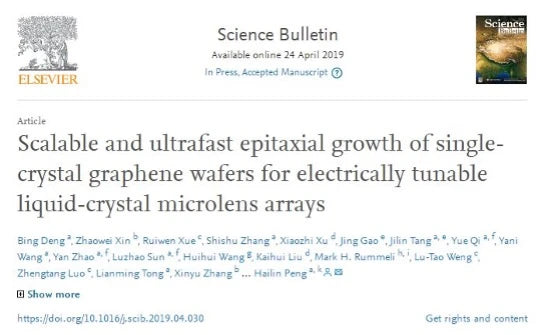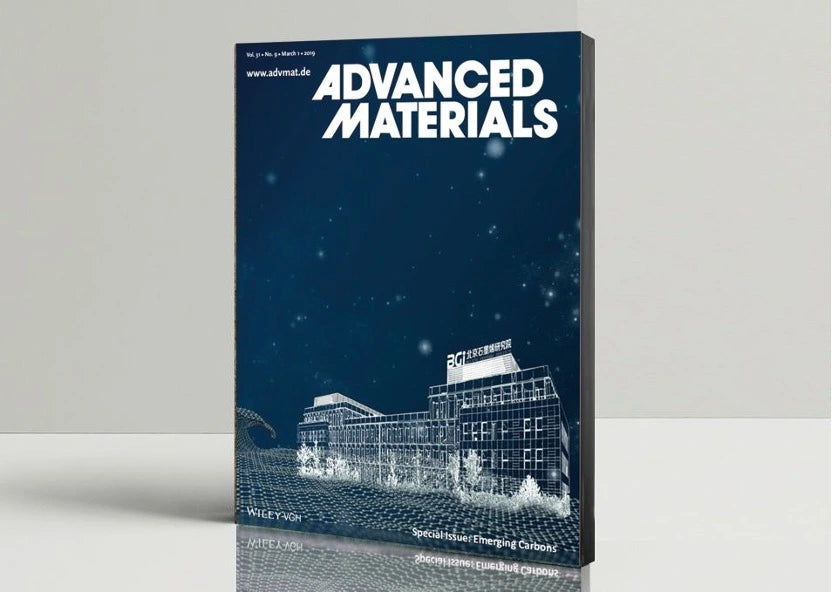In a groundbreaking collaboration, Professor Peng Hailin and Academician Liu Zhongfan's team has pioneered the rapid fabrication of 4-inch graphene single-crystal wafers, leveraging a novel research approach that involves the preparation of epitaxial substrates followed by graphene's epitaxial growth. This monumental achievement was made possible by first developing a 4-inch CuNi(111) copper-nickel alloy monocrystalline thin film, which served as the foundational growth substrate.

Simultaneously, the team, in collaboration with partners, has innovatively designed and developed equipment for the mass production of graphene single-crystal wafers. This breakthrough equipment can produce 25 pieces of 4-inch graphene single-crystal wafers in a single batch, boasting an annual production capacity of 10,000 pieces. This achievement marks a global first in the scalable manufacturing of graphene single-crystal wafers.
Key Insights:
Substrate Design and Selection for Graphene Single-Crystal Growth:
The characteristics of the substrate, including its monocrystallinity and smoothness, significantly influence the growth of graphene material. The collaborative team utilized a 4-inch sapphire wafer as the substrate and employed magnetron sputtering along with solid-phase epitaxial recrystallization to create a 500 nm thick CuNi(111) monocrystalline thin film. This method skillfully navigated the twin problem often associated with epitaxial growth of face-centered cubic metal monocrystals on sapphire, thanks to interface stress engineering. The introduction of nickel effectively reduced the evaporation-induced step formation in the copper thin film at high temperatures, resulting in excellent flatness across the 4-inch copper-nickel monocrystalline thin film. This technique allows for the creation of CuNi alloy monocrystalline substrates with various composition ratios, expanding their application range.

Rapid Epitaxial Growth of Graphene Single-Crystal Wafers:
Through atmospheric pressure chemical vapor deposition, the team achieved epitaxial growth of graphene single domains on the CuNi(111) alloy monocrystal, seamlessly merging to form a 4-inch graphene single-crystal wafer. Under identical growth conditions, the growth time for the 4-inch graphene single-crystal wafer was reduced to 10 minutes—50 times faster than on Cu(111) substrates—significantly lowering energy consumption and enhancing production capacity. Further mechanistic studies revealed that a minimal Ni content (10%) markedly increased the carbon source's decomposition rate, facilitating rapid graphene growth while maintaining surface reaction dominance. The resulting graphene was strictly monolayered, exceptionally smooth, and free from wrinkling issues.

Development of Graphene Single-Crystal Wafer Batch Production Equipment:
In tandem, the team and their collaborators independently designed and developed pilot-scale graphene single-crystal wafer growth equipment. Based on the principles of atmospheric pressure chemical vapor deposition, the equipment's optimized temperature zones, airflow, gas intake method, chamber pressure, and materials rack enabled uniform temperature and flow field control within the growth chamber. Optimized growth conditions allowed for the rapid production of 25 pieces of 4-inch graphene single-crystal wafers per batch, with excellent uniformity across and within wafers, comparable in quality to those produced by smaller growth systems. The equipment's maximum annual capacity reaches 10,000 pieces and is compatible with the production of 6-8 inch graphene single-crystal wafers.






Leave a comment
All comments are moderated before being published.
This site is protected by hCaptcha and the hCaptcha Privacy Policy and Terms of Service apply.